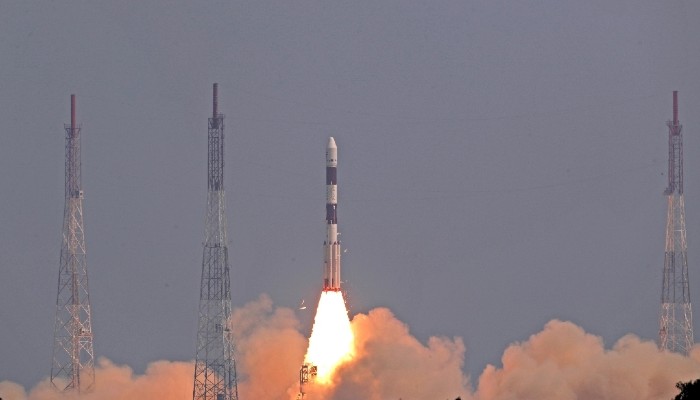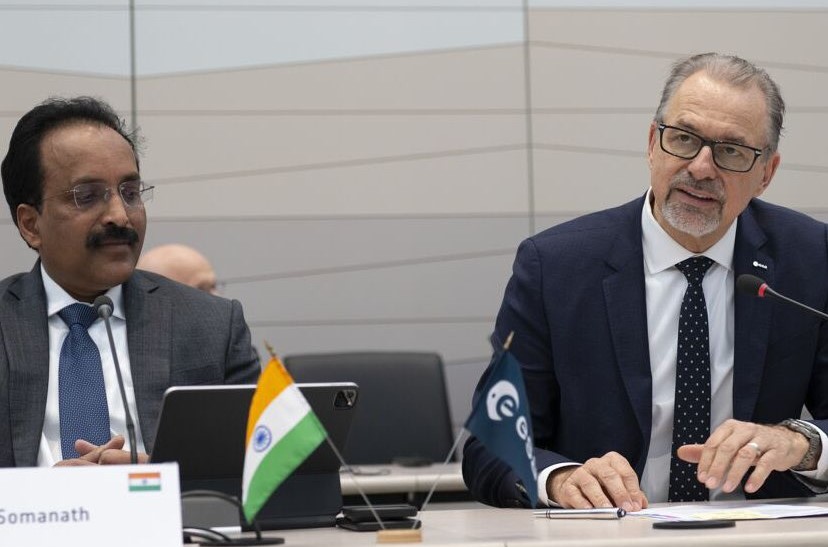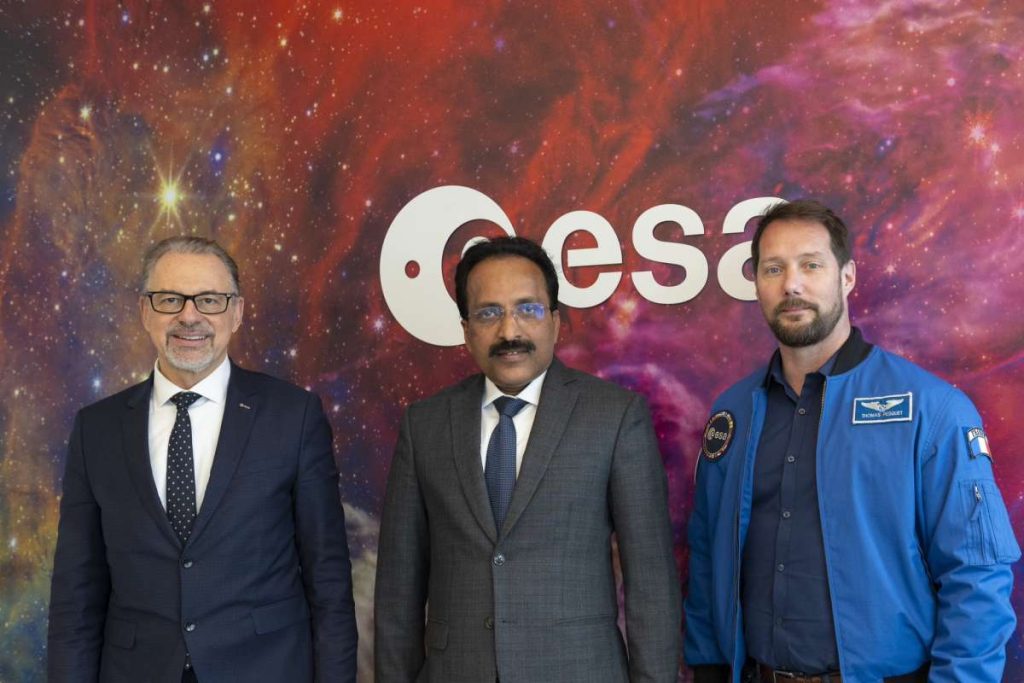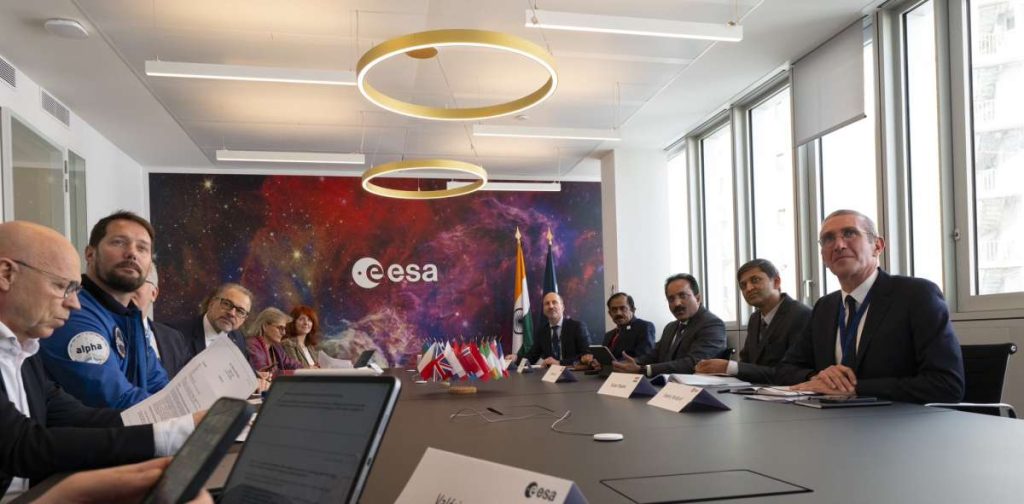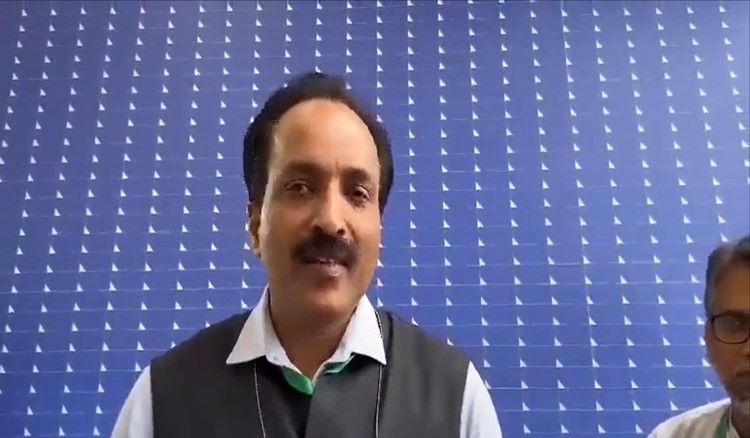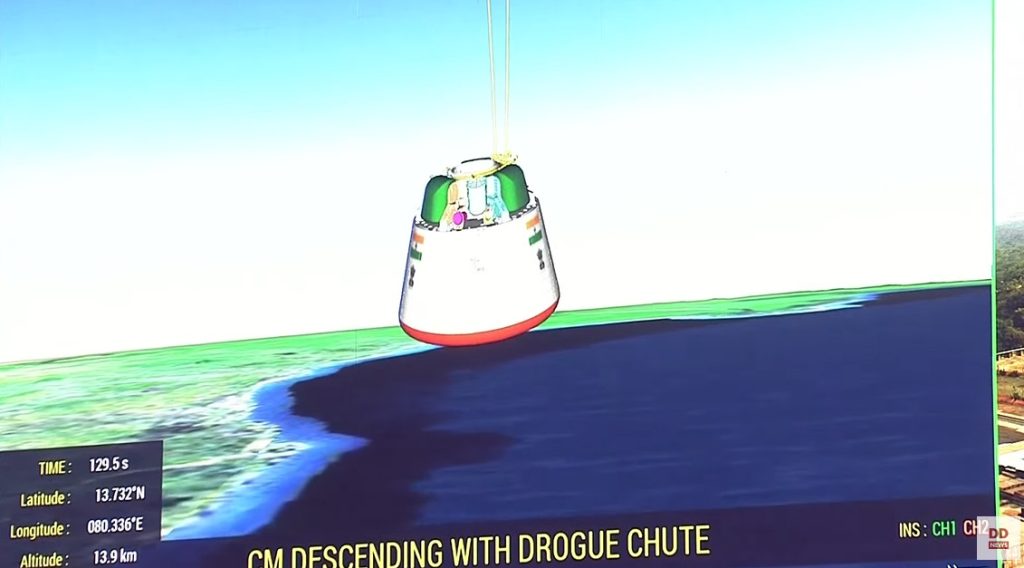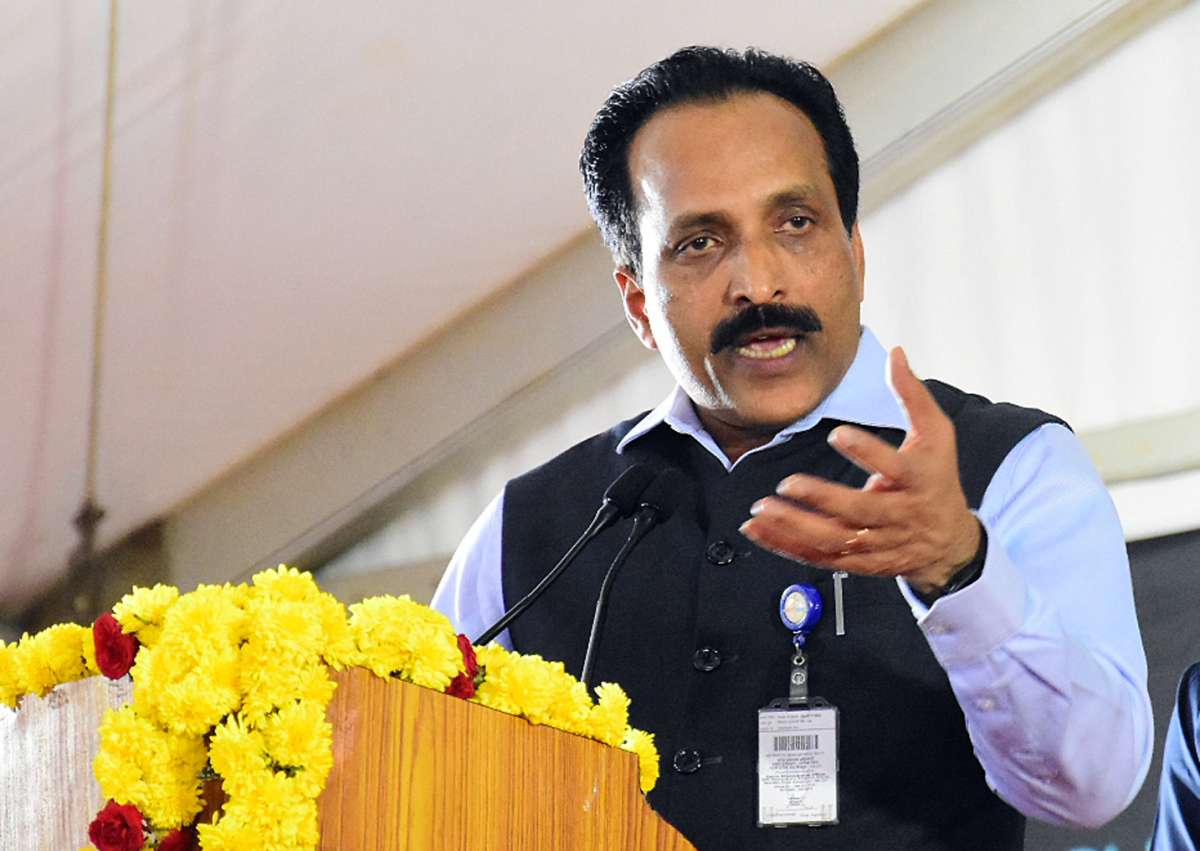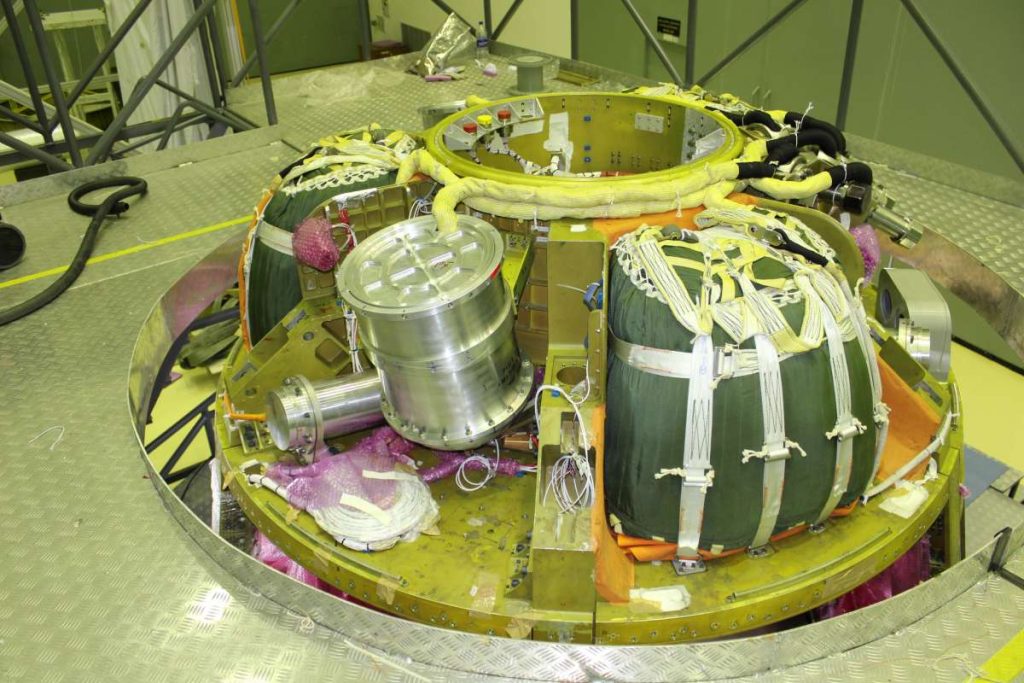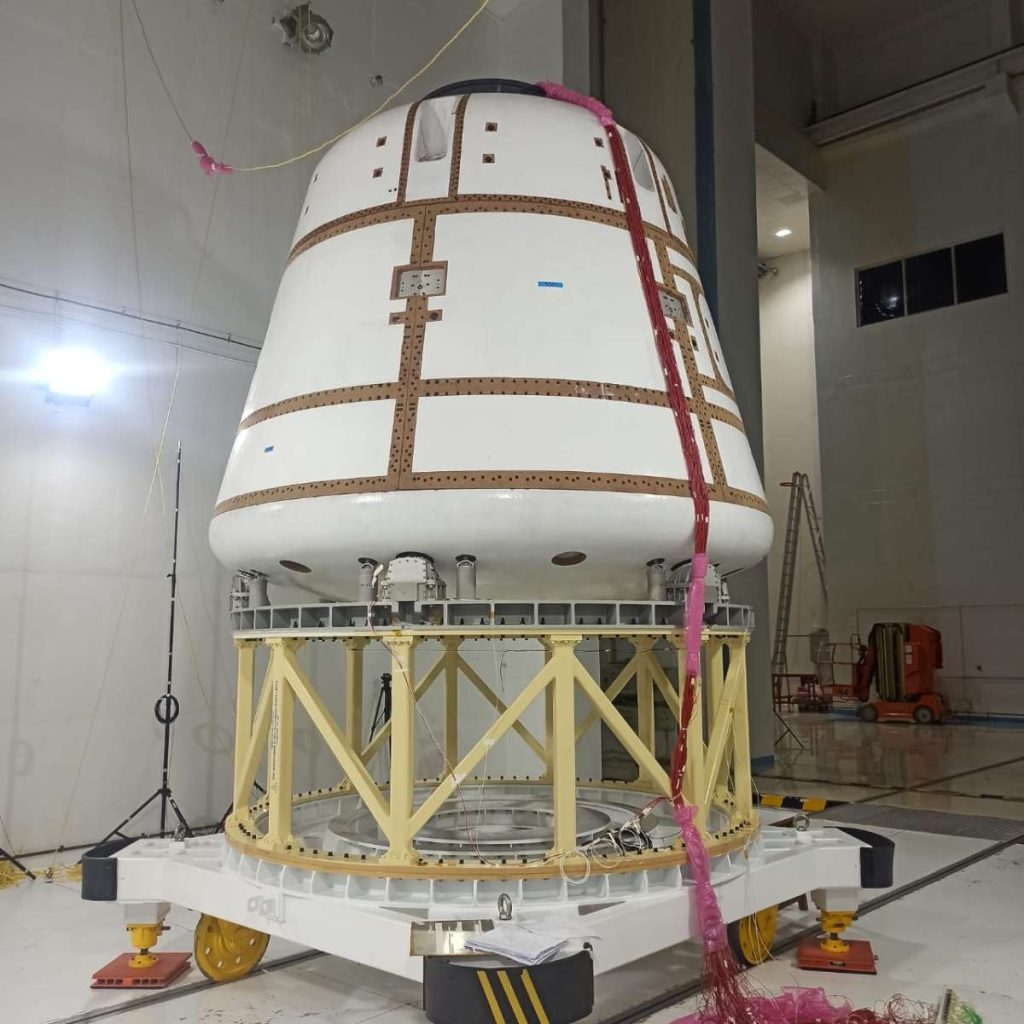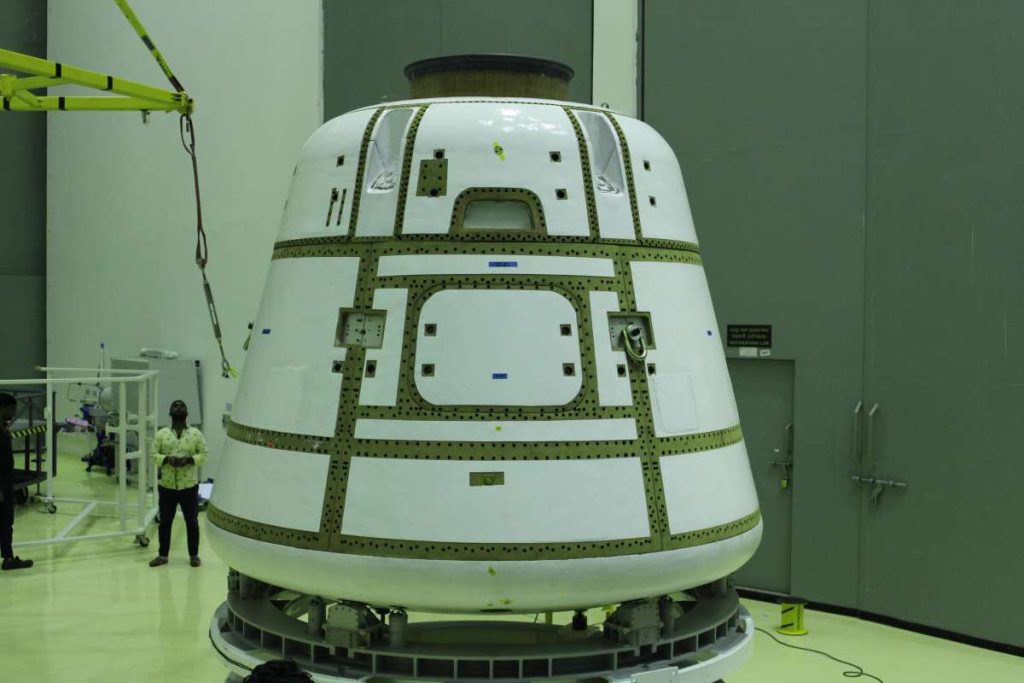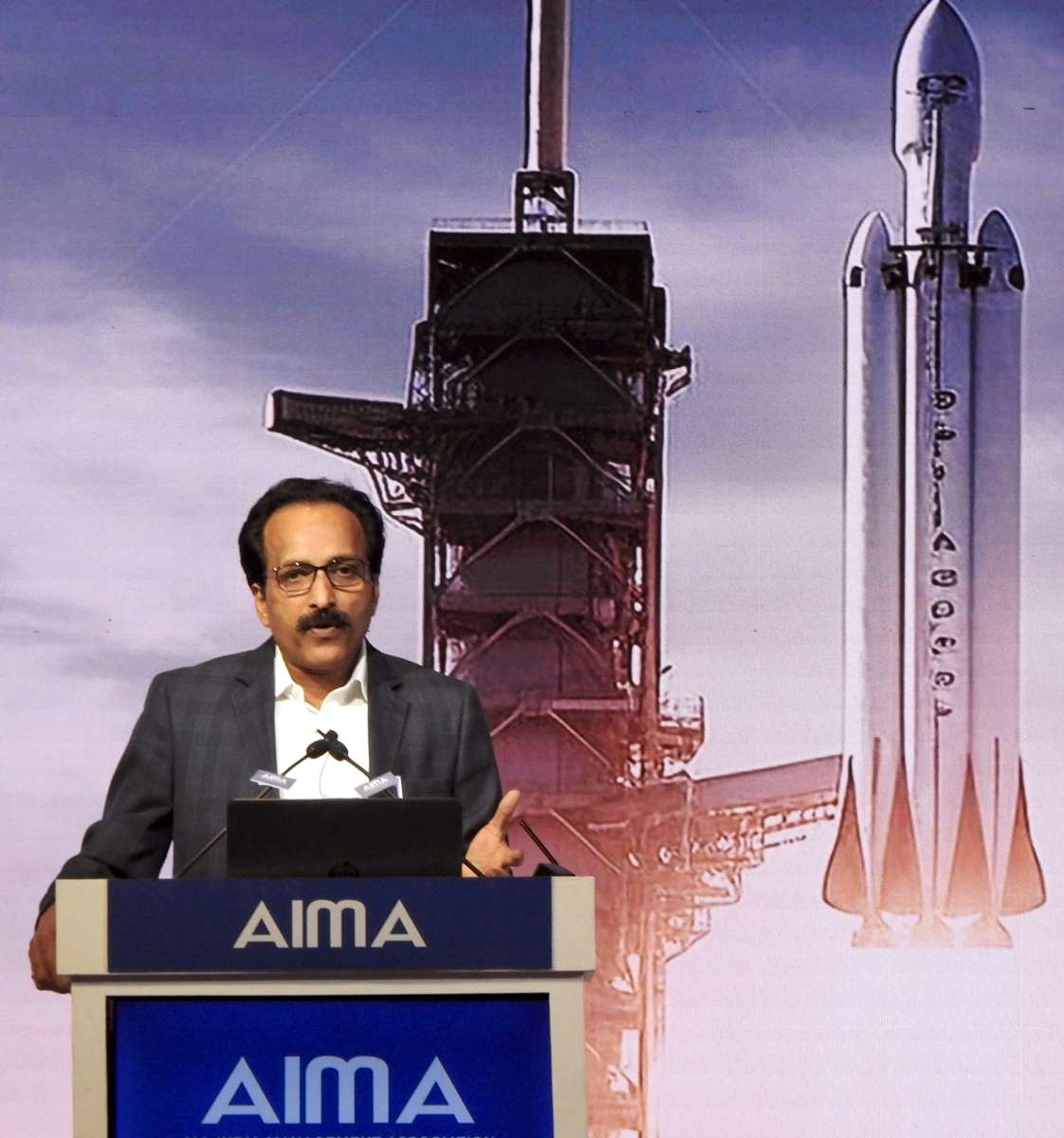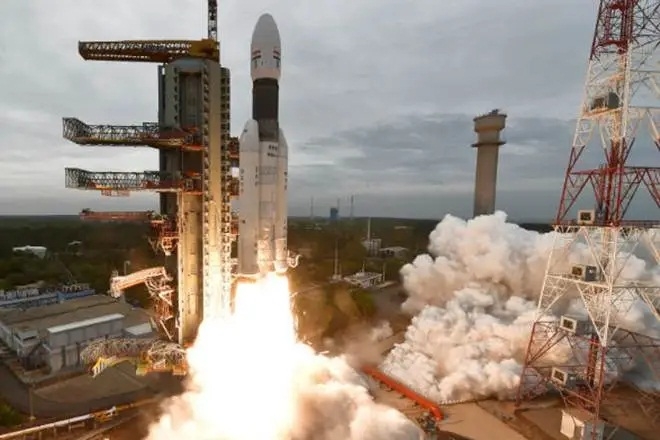This innovation is set to dramatically enhance the performance and payload capacity of ISRO’s launch vehicles…reports Asian Lite News
The Indian Space Research Organisation (ISRO) has announced a significant breakthrough in rocket technology with the development of a new lightweight Carbon-Carbon (C-C) nozzle. This innovation is set to dramatically enhance the performance and payload capacity of ISRO’s launch vehicles, marking a pivotal advancement in its space exploration capabilities.
The innovation originates from ISRO’s Vikram Sarabhai Space Centre (VSSC) located in Thiruvananthapuram.
According to information provided by ISRO in a statement, the development involved the use of advanced Carbon-Carbon composites to create a nozzle divergent, distinguished by its exceptional mechanical properties at high temperatures. This new nozzle divergent is characterized by its low density, high specific strength, and excellent stiffness—attributes that are crucial for enhancing the efficiency of rocket engines.
The newly designed C-C nozzle is anticipated to significantly elevate vital parameters of rocket engines, such as thrust levels, specific impulse, and thrust-to-weight ratios.
According to ISRO, the potential impact of this development is significant, particularly for its workhorse launcher, the Polar Satellite Launch Vehicle (PSLV). The PS4, the fourth stage of the PSLV, currently employs twin engines with nozzles made from Columbium alloy.
“However, by replacing these metallic divergent nozzles with C-C counterparts, a mass reduction of approximately 67% can be achieved. This substitution is projected to increase the payload capability of the PSLV by 15 kg, a notable enhancement for space missions,” ISRO said.
Durability and Resistance Features
One of the standout features of the C-C nozzle is its specialized anti-oxidation coating made of Silicon Carbide. This coating significantly extends the operational limits of the nozzle in oxidizing environments, a common challenge in rocket operations. It reduces thermally induced stresses and enhances corrosion resistance, which together allow for extended operational temperature limits. These enhancements ensure that the nozzle remains durable and effective in the hostile environments of space.
The efficacy and reliability of the new nozzle were rigorously tested at the ISRO Propulsion Complex (IPRC) located in Mahendragiri, Tamil Nadu. The testing protocol included a 60-second hot test conducted on March 19, 2024, followed by a more extended 200-second hot test on April 2, 2024. These tests confirmed the nozzle’s performance and hardware integrity, with temperatures reaching up to 1216K, aligning with the predicted outcomes and demonstrating robust system capabilities.
The development of the new nozzle was a result of a collaborative effort across multiple ISRO centres. The Liquid Propulsion Systems Centre (LPSC) at Valiamala near Thiruvananthapuram played a critical role in designing and configuring the tests. Meanwhile, the IPRC was responsible for the instrumentation and execution of these tests at their High-Altitude Test (HAT) facility. This teamwork integrates ISRO’s technological advancements with its mission preparations.
This technological breakthrough significantly enhances the capabilities of ISRO’s workhorse launcher, the PSLV. It not only promises to support more ambitious space missions but also paves the way for advancements in other satellite launch vehicles. By increasing payload capacity, ISRO can undertake more complex and weightier missions, potentially including manned space flights and interplanetary explorations.
The successful development and testing of the Carbon-Carbon nozzle demonstrates ISRO’s ongoing commitment to innovation and excellence in space technology. This breakthrough is expected to play a critical role in future explorations, contributing to ISRO’s growing reputation as a leader in global space research and exploration. (India News Network)

Indian space sector has endless potential: Capt. Gopichand
The Indian space sector, led by the Indian Space Research Organisation (ISRO) and other private players, has endless potential, and it’s time to take elephant steps to scale higher, said Captain Gopichand Thotakura on Monday.
“India has achieved something which other countries have not been able to achieve for decades. And to really defy landing on the South Pole, as the first country shows that the potential is absolutely endless,” Captain Gopichand, who is soon set to become the first Indian to become a space tourist, told IANS.
Captain Gopichand will soon be a part of the six-person crew flying on Blue Origin’s NS-25 mission to the edge of space.
He said that most of space travel is restricted by funding. But with the opening of the sector to public-private partnership “space is not the limit anymore, we can reach far beyond what any other country has already reached. And what you saw with Chandrayaan is just a small example”.
He said that India, which is the most populated country in the world, has a foot in almost every industry possible, but “we are yet to put a human in a rocket launched from Sriharikota”.
“The funding is what we’re missing,” which will now happen due to privatisation of the sector.
Lauding the efforts of ISRO, he said the funds which the ISRO spent on the Chandrayaan mission to the Moon are “unbelievable”.
In August 2023, the Chandrayaan-3 mission, led by scientists at ISRO, made history by becoming the first nation in the world to land near the south pole of the Moon. It has also become the fourth nation to make a soft landing on the Moon after the erstwhile USSR, the US, China.
“I think that the world is ready to be awakened with what ISRO can do,” he said while speaking about the Gaganyaan mission and more from ISRO. He, however, noted that “It’s not about baby steps anymore, we need to take elephant steps”.
The Gaganyaan mission aims to send a manned three-day mission to space, which will orbit 400 km above Earth and will return.
Four group captains from the Indian Air Force — Prasanth Balakrishnan Nair, Ajit Krishnan, and Angad Pratap, and wing commander Shubanshu Shukla — have been selected for the mission, slated for 2025.
Captain Gopichand, said to aspire for a day when a civilian, from a non-science background, from the Indian soil would fly to space, either as an astronaut or as a tourist.
“It is one of the things where I want to contribute. I don’t come from a military background. To be selected for such missions is to break the barrier, to put a civilian in space, to have our blood, who’s not from a military background. “
ALSO READ: Pak Govt Rapped over X Ban

